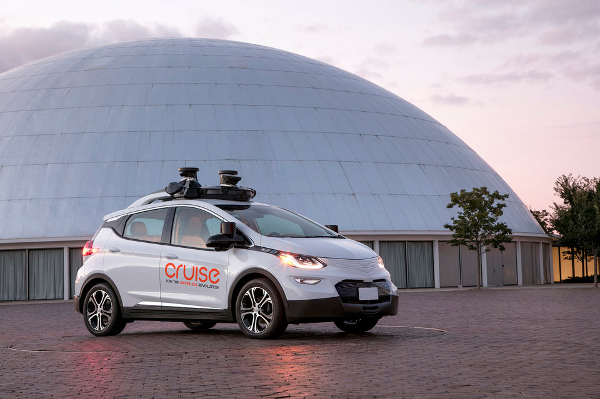 EMERGING TECH
EMERGING TECH
 EMERGING TECH
EMERGING TECH
 EMERGING TECH
EMERGING TECH
General Motors Co. announced today that its Cruise self-driving car unit is exiting the robotaxi business as part of a realignment of the company’s autonomous driving strategy.
Under the realignment, GM said, it will use Cruise technology to prioritize the development of advanced drive assistance systems on a path to fully autonomous personal vehicles. The company will also build on the progress of “Super Cruise,” its hands-off, eye-on driving feature, which is now offered in more than 20 GM vehicle models and has been employed in more than 10 million driving miles per month.
The realignment will also see Cruise effectively cease as a standalone company despite having taken various rounds of venture capital. GM intends to combine the Cruise and GM technical teams into a single effort to advance autonomous and assisted driving.
Founded in 2013 by Kyle Vogt and Dan Kan, Cruise initially developed retrofit kits to equip existing vehicles with limited self-driving capabilities. The company shifted focus in 2014 to creating fully autonomous vehicles, with the development of self-driving technology using modified Nissan Leafs.
GM acquired Cruise in 2016 to advance its autonomous vehicle initiatives. Seeking additional funding, GM ran Cruise as a standalone company and sought venture capital, with Cruise gaining investments, including $2.25 billion from SoftBank Group Corp. in 2019 and a $2.75 billion partnership with Honda Motor Co. Ltd. in 2018.
Despite the large amounts invested by companies outside GM into Cruise, under the restructuring, GM will end up owning 97% of Cruise.
Cruise’s history in the robotaxi game can be fairly described as colorful.
Problems at the robotic taxi service started in September last year when reports emerged that two Cruise vehicles delayed an ambulance in San Francisco on Aug. 14, leading to a patient later dying in hospital. In October 2023, a pedestrian, who was hit by a car driven by a human driver, was thrown into the path of a Cruise robotaxi. Instead of stopping, the Cruise vehicle dragged the woman 20 feet down the road before coming to a stop.
Following the two incidents, Cruise announced in November 2023 that it was recalling all of its 950 driverless vehicles. At the time, Cruise said the accident was the result of its “Collision Detection Subsystem,” which “may cause the Cruise AV to attempt to pull over out of traffic instead of remaining stationary when a pullover is not the desired post-collision response.”
Following the incidents, Cruise resumed testing vehicles and offering robotaxi services in Phoenix and Dallas, but with today’s announcement, perhaps the issues were ultimately fatal.
With GM leaving the robotaxi race, the remaining companies offering autonomous ride-hailing services in the U.S. include Google LLC through Waymo and Uber Technologies Inc. through a partnership with Waymo.
Support our mission to keep content open and free by engaging with theCUBE community. Join theCUBE’s Alumni Trust Network, where technology leaders connect, share intelligence and create opportunities.
Founded by tech visionaries John Furrier and Dave Vellante, SiliconANGLE Media has built a dynamic ecosystem of industry-leading digital media brands that reach 15+ million elite tech professionals. Our new proprietary theCUBE AI Video Cloud is breaking ground in audience interaction, leveraging theCUBEai.com neural network to help technology companies make data-driven decisions and stay at the forefront of industry conversations.